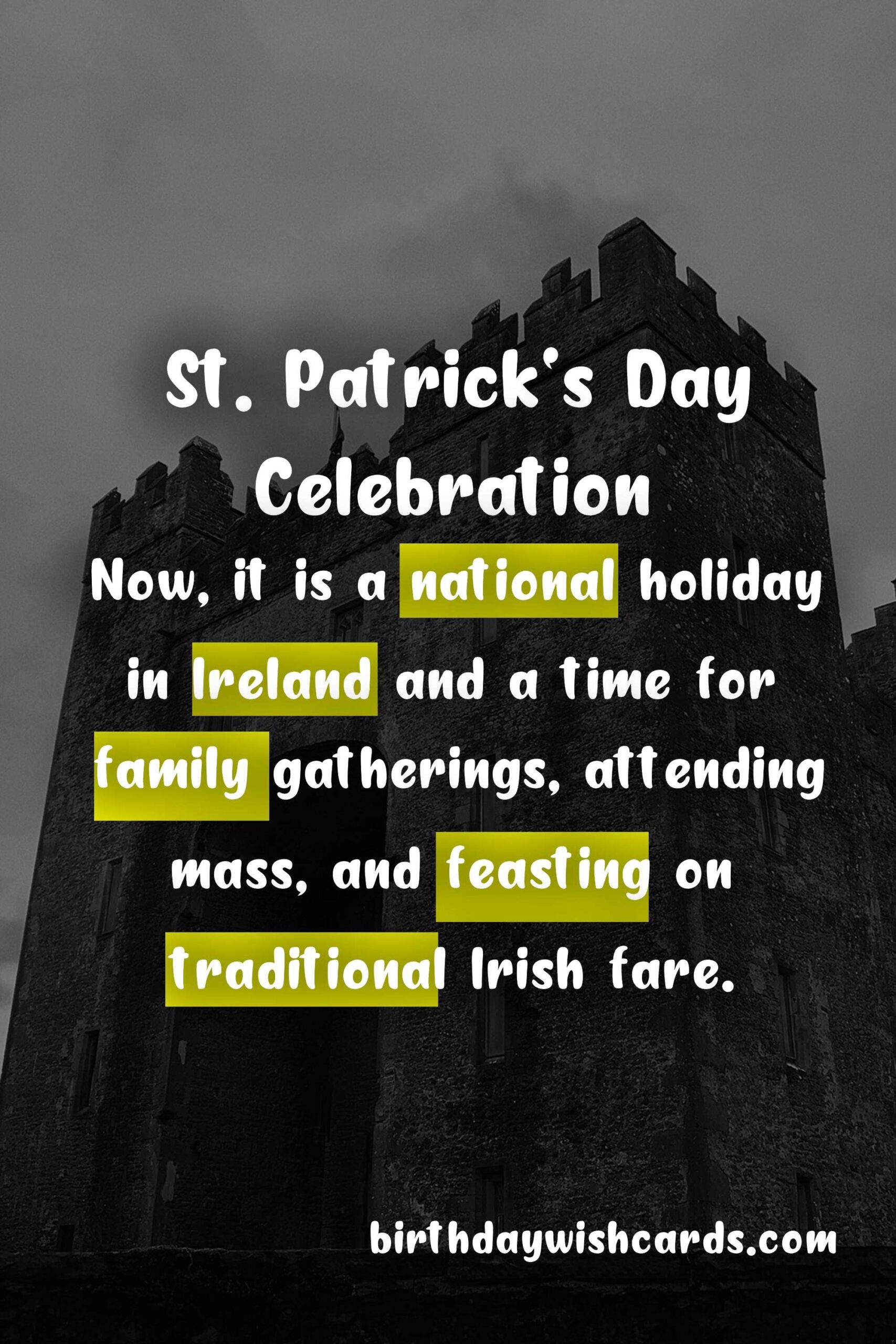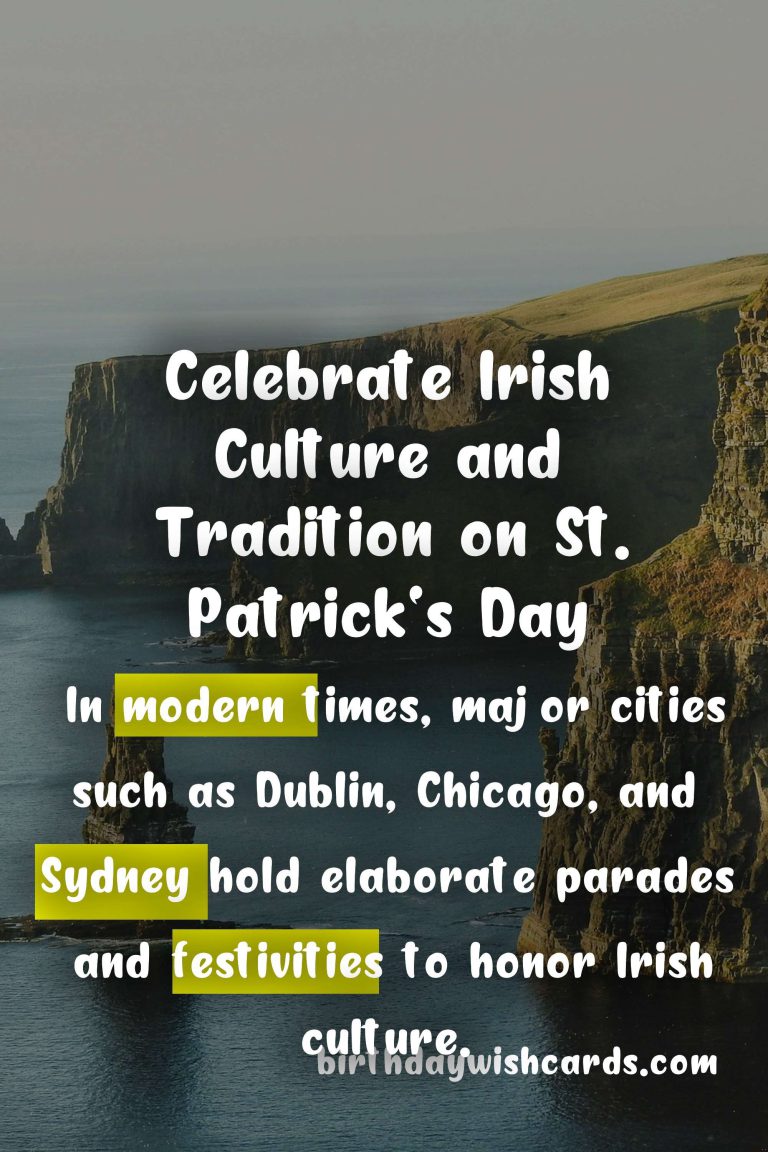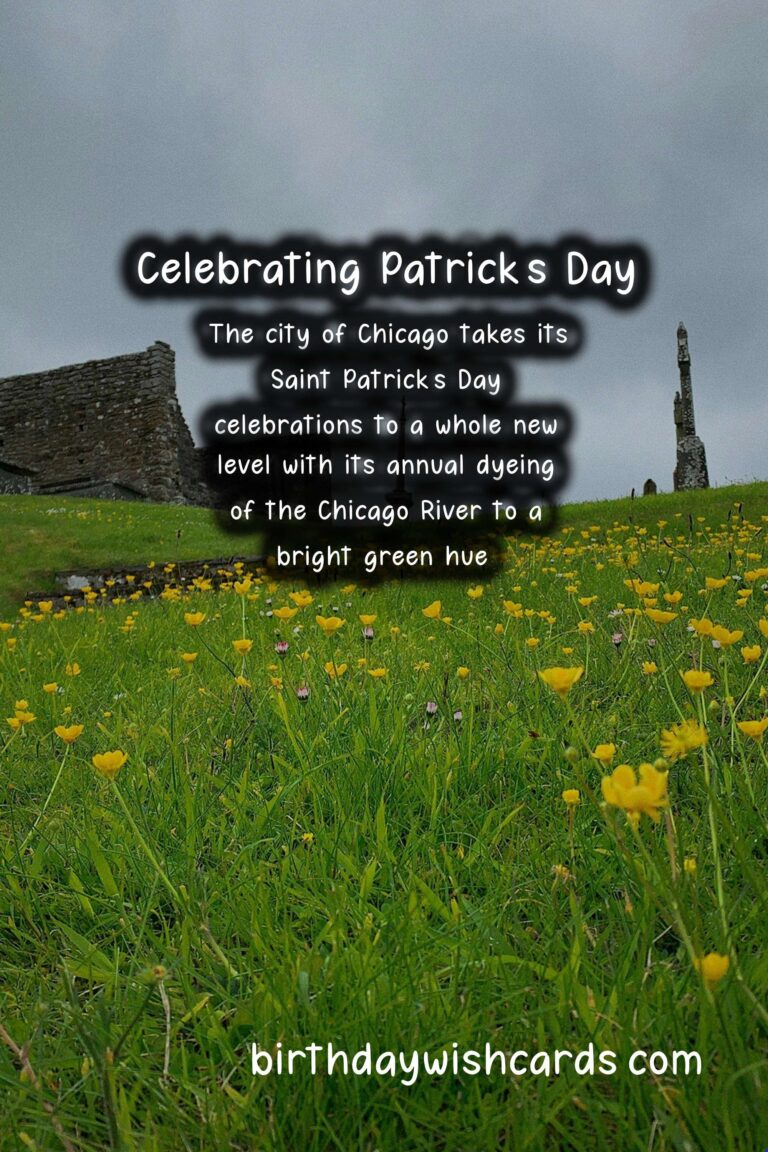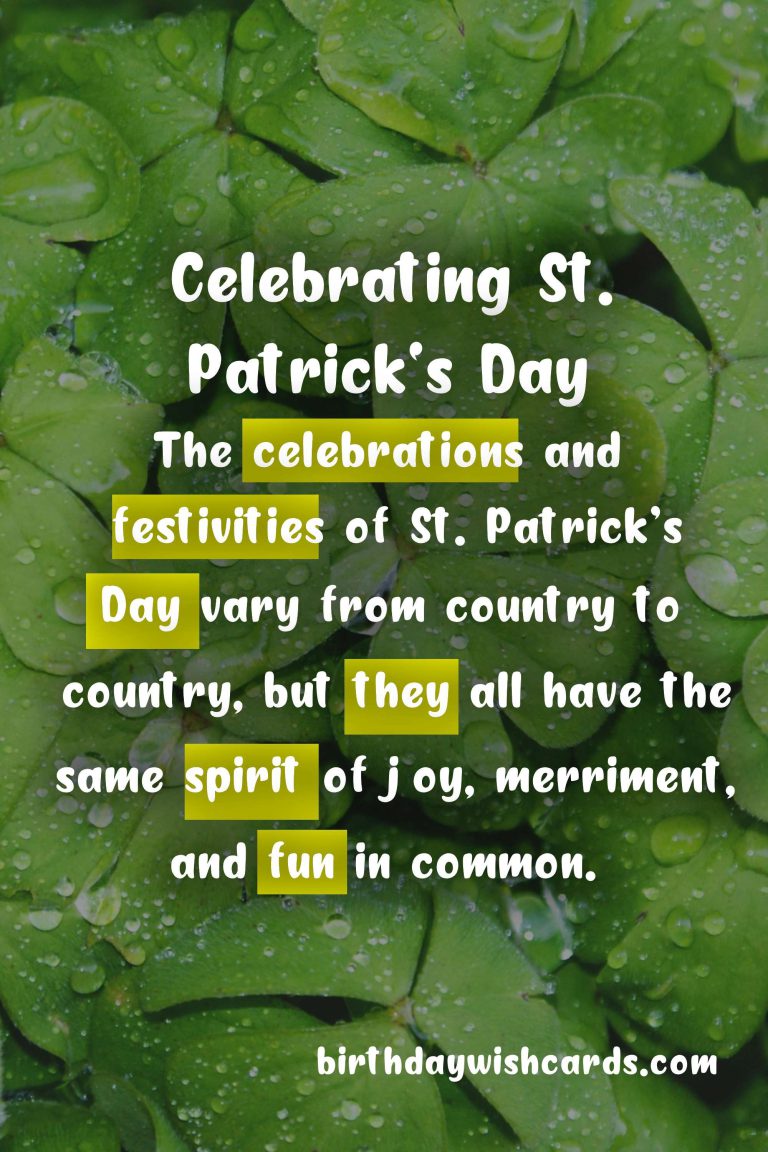St. Patrick’s Day – March 17: A Festive Celebration of Irish Culture
St. Patrick’s Day, also known as the Feast of Saint Patrick, is a cultural and religious celebration held on March 17th each year. It honors the patron saint of Ireland, Saint Patrick, and celebrates Irish culture and heritage. The holiday has been celebrated for over 1,000 years and has evolved into a global celebration of Irish pride and tradition. From parades and parties to traditional foods and green everything, March 17th is a lively and spirited occasion for all to enjoy.
One of the most recognizable symbols of St. Patrick’s Day is the shamrock, a three-leaf clover that is said to have been used by Saint Patrick himself to explain the concept of the Holy Trinity.
Legend has it that Saint Patrick used the shamrock to visually represent the Father, Son, and Holy Spirit to the pagans of Ireland in the 5th century.
The green color of the shamrock has also become synonymous with the holiday, reflecting the green landscape of Ireland and its vibrant culture.
The wearing of green has become a tradition on St. Patrick’s Day, with many people donning green clothing and accessories to show their Irish pride.
Green is also the color of choice for many festive decorations, from green balloons and streamers to green food and drinks.
In addition to the shamrock, another well-known symbol of St. Patrick’s Day is the leprechaun, a small, mischievous creature from Irish folklore.
These mythical beings are said to be shoemakers who hide their gold at the end of a rainbow, making them a popular figure in St. Patrick’s Day imagery and decorations.
Parades are a common tradition on St. Patrick’s Day, with the first parade being held in New York City in 1762.
Today, the New York City parade is the largest St. Patrick’s Day parade in the world, with over 2 million spectators lining the streets each year.
Other cities around the world have also adopted the tradition of holding St. Patrick’s Day parades, including Dublin, Ireland, which has the third-largest parade in the world.
One of the most iconic symbols of St. Patrick’s Day parades is the bagpipe, a musical instrument often associated with Irish culture.
Traditional Irish music and dancing are also an important part of the celebrations, with performances at pubs, restaurants, and public events.
While many people may associate St. Patrick’s Day with drinking and partying, the holiday also has a cultural and religious significance.
In fact, until the 1970s, pubs in Ireland were closed on St. Patrick’s Day, as it was considered a solemn feast day in the Catholic Church.
Now, it is a national holiday in Ireland and a time for family gatherings, attending mass, and feasting on traditional Irish fare.
Corned beef and cabbage is a popular dish served on St. Patrick’s Day, as well as Irish soda bread, a simple yet delicious bread made with flour, baking soda, buttermilk, and sometimes raisins.
Another traditional beverage served on this holiday is green beer, which became popular in the United States in the 20th century.
March 17th also marks the start of spring in the northern hemisphere, making St. Patrick’s Day a time of renewal and new beginnings.
It is a day to celebrate the rich history and traditions of Ireland, and to honor the legacy of Saint Patrick and his contributions to Christianity and Irish culture.
In conclusion, St. Patrick’s Day is a joyous and festive celebration of the Irish spirit, with traditions and customs that have been passed down for centuries.
Whether you’re Irish or just Irish at heart, this holiday is a time to embrace your heritage and join in the revelry with family and friends.
So put on your greenest attire, raise a glass and say ‘Sláinte!’ (cheers), and enjoy the festivities of St. Patrick’s Day with a renewed appreciation for the rich culture and traditions of Ireland.
#StPatricksDay #IrishPride #GreenCelebration















